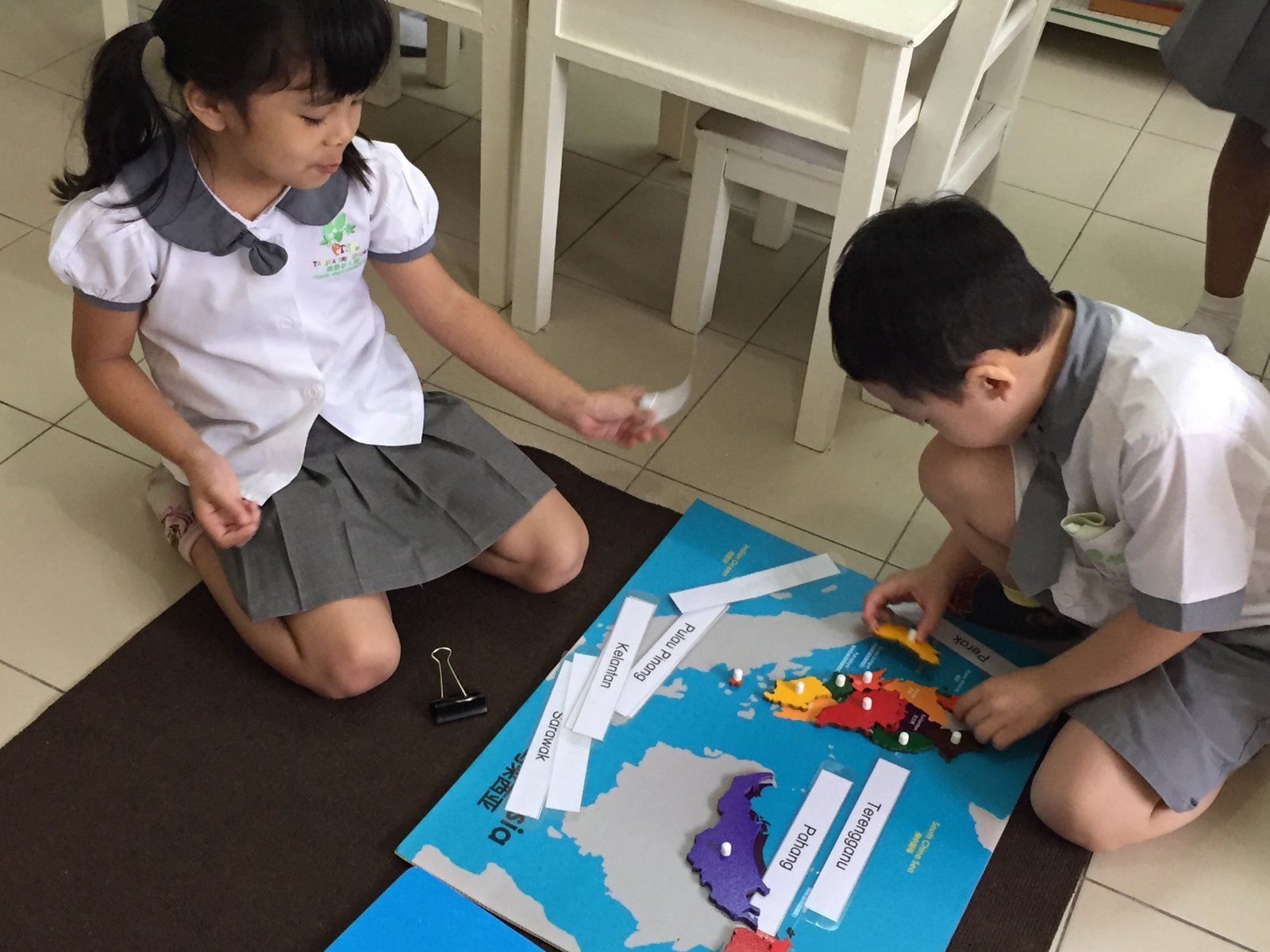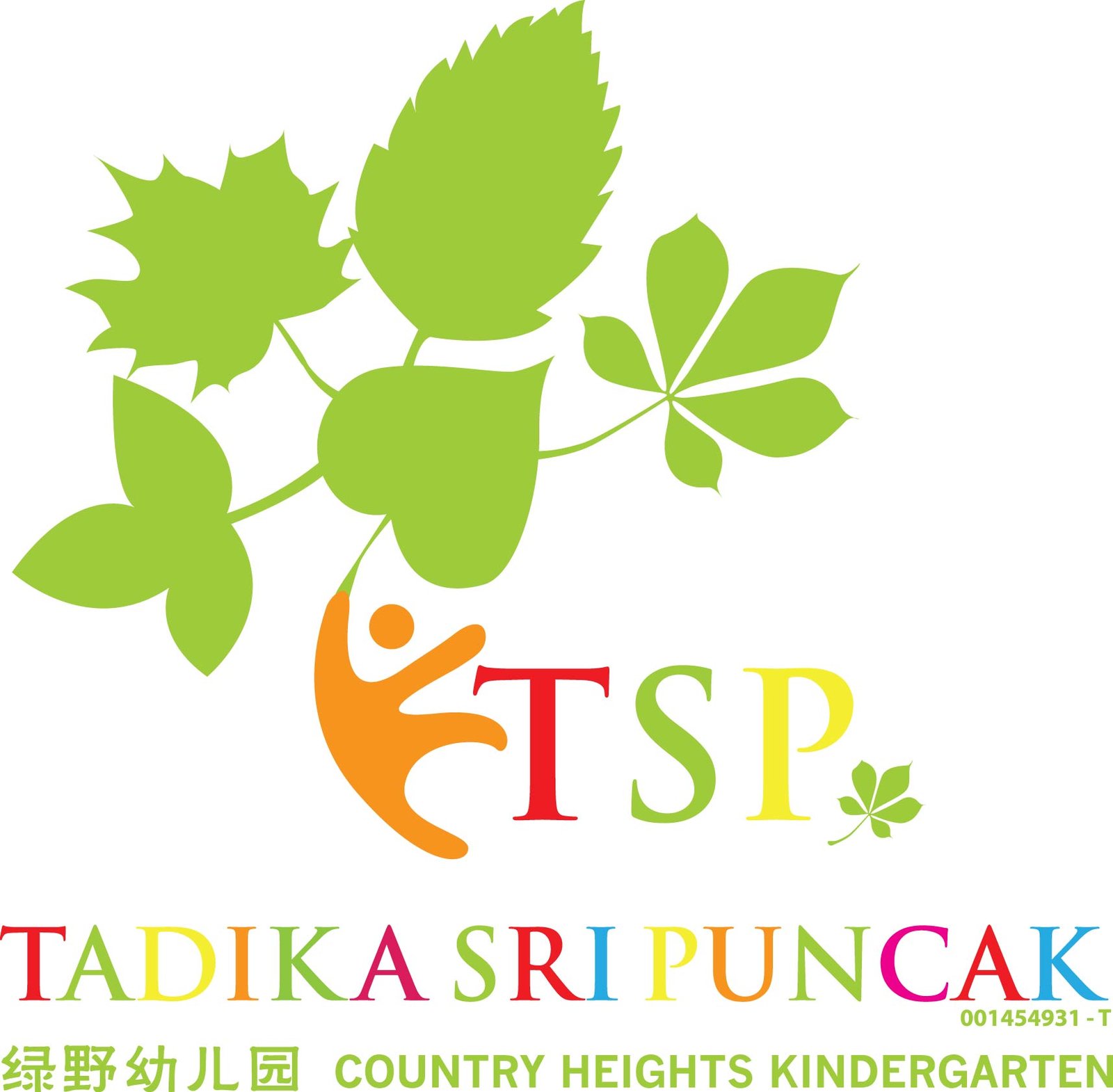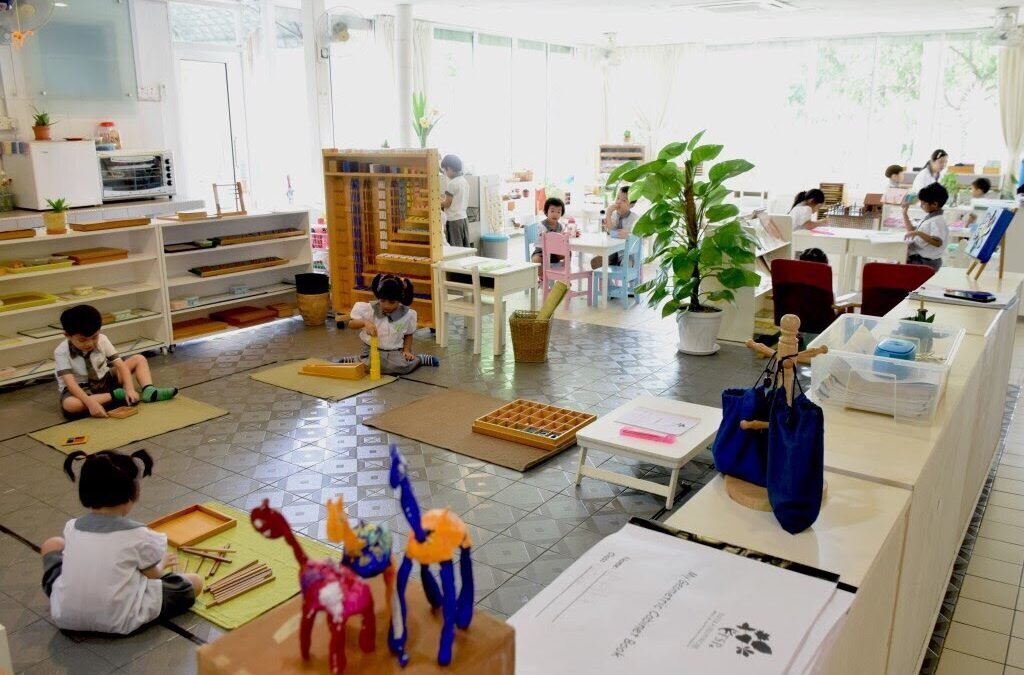A PEAK INSIDE THE MONTESSORI CLASSROOM:
How can children learn in a mixed-aged classroom? Would it be rather difficult for a teacher to take care of my child’s learning progress in the classroom? I couldn’t imagine how can my child learn better in a classroom with mix ages! As a new Montessori practitioner, I could still remember all these questions popped from my mind when I was still in my college, studying the philosophy behind Montessori’s pedagogy. The concept of mix-aged group in a classroom happens to be common around the world. However, how do we know if it is efficient for children’s learning?
If we study the philosophy of Montessori’s educational approach, teachers are well-trained being the “eye” of the classroom. They need to have the ability observing every single detail from children’s developmental growth, to a little small pot of plant at the corner of the classroom. Here I am, lucky enough to have the luxury observing how does a Montessori classroom look like.

Imagine our working environment as adults, do you work only with people who are the same age as you are? Definitely NOT! This is the main idea, we create a MINI SOCIETY for the children to learn from peers! Physically, you might see the children are growing differently, in fact, they are different in all ways, no matter cognitively, socially, emotionally and development of their language. We always learn from those who share different strengths that we might not acquire yet, this goes the same to the children. Their need to learn can be met by interacting with different age groups!
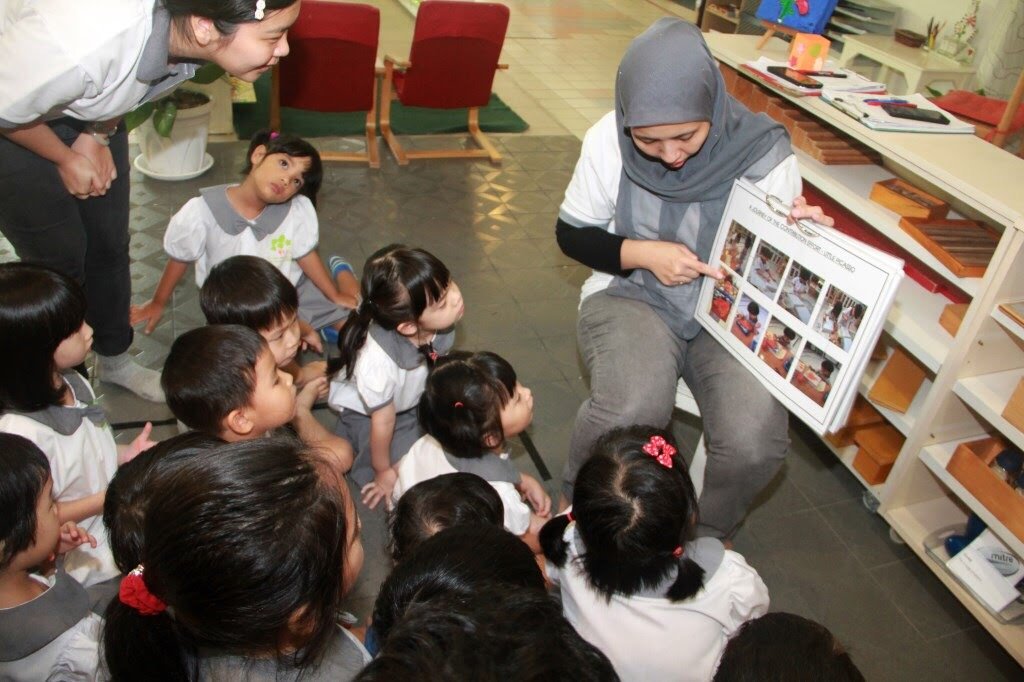
Other than that, in this ‘mini-society’, children learn to respect and response with grace and courtesy. For example, each child will learn to clear his/her workspace after completing their work. What does the child learn? Cleaning the place? NOT ONLY THAT. Children will learn that they need to respect the environment by taking care of the classroom, they will also learn that space is shared among everyone in the classroom. The younger children learn the rules; the older children have a deeper understanding of the reason behind the rules. Therefore, older children will be the guidance, the role model that lead the younger children to learn better in many ways. The older children will develop many positive values while helping the younger children to grow. They will learn to communicate according to the level of younger children’s understanding. I have seen a six-year-old child tried so hard to make a three-year-old child understand the way to paste a strip of paper on her book. She tried to explain verbally at first, but it did not work. Then, she found a way to help her by pasting her own strip in front of her. See that? It’s not only about learning skills, but how the child took the initiative to help and support the younger child.
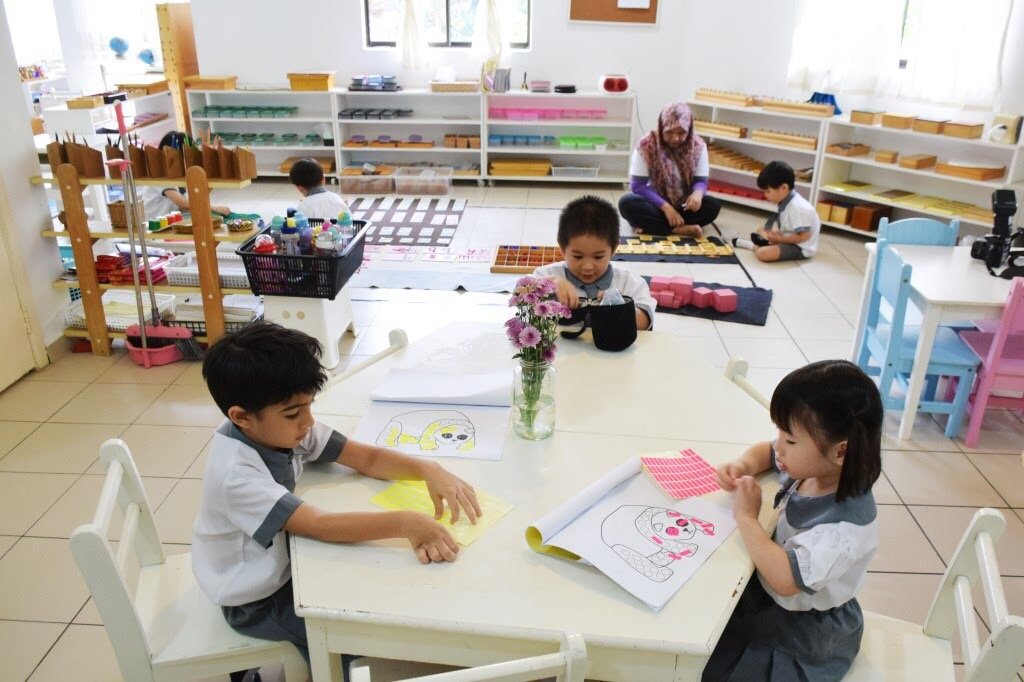
Younger children learn by observing the older children in the classroom. If you have come across with the theory of zone of proximal development(ZPD) by Lev Vygotsky, children in their ZPD need support and aid to acquire new knowledge/skills. Hence, scaffolding is one of the most efficient ways that a teacher or a more competent classmate will do to aid a child’s learning. For example, if a child is competent working with embroidery, he/she can show the child who might be new to embroidery. Imagine if you have twenty children in the classroom, you will observe twenty individuals with different strengths and personalities. They all learn among each other by working together with respect and care. Thus, it never about the age, but the way they learn from each other. I have been asked if teachers are able to take care of all children in the classroom equally with the concept of mixed-ages in the classroom. Well, as educators, we have the responsibility to observe, to plan and to support children’s individual learning. (Yes, don’t worry, we are trained to do that every single day!)
